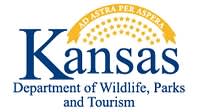Field Care Critical for Kansas Venison

Venison is healthy culinary treat if cared for properly
“Gamey,” “tough,” and “dry” are three adjectives that should never describe your deer meat, and if proper practices take place while in the field, the reward can be quite a culinary treat. Whether you are processing a deer for the first time, or are looking to try a different process, the Kansas Department of Wildlife, Parks and Tourism has a brief, easy-to-follow video on field dressing your harvest that will walk you through the process from start to finish. Just visit ksoutdoors.com and click “Hunting/Big Game Information” to view the video.
After a shot has been placed and the deer recovered, a hunter should immediately tag the carcass and begin cooling the meat. This can be done by immediately field dressing, or gutting, the carcass. The first step in dressing the deer should be to remove the deer’s entrails. Next, prop open the ribcage and let cool air circulate throughout the body cavity. After a few minutes have passed the carcass can then be moved to the final location of processing, taking care to keep the meat clean.
If you plan to use a commercial butcher/processer, it’s a good idea to call ahead and make sure they are open and can get your deer into the cooler. If you plan to process the meat yourself, you’ll need a cool, clean place to hang the carcass, which should be skinned as quickly as possible unless temperatures are very cool. Prompt skinning is another important step in cooling the meat when temperatures are mild. Once meat has been processed, it’s time to hit the grill.
Since venison is very lean, adding a strip of bacon to steaks or mixing beef tallow or sausage to the burger can add great flavor to the meat. The only “trick” to cooking tasty venison, is not overcooking it as there is a fine line between just right and an overcooked. Venison, as with all wild game, should be carefully cooked to medium or medium rare. Let the meat rest a few minutes after cooking while you prepare your sides, dish up a plate, and enjoy!

